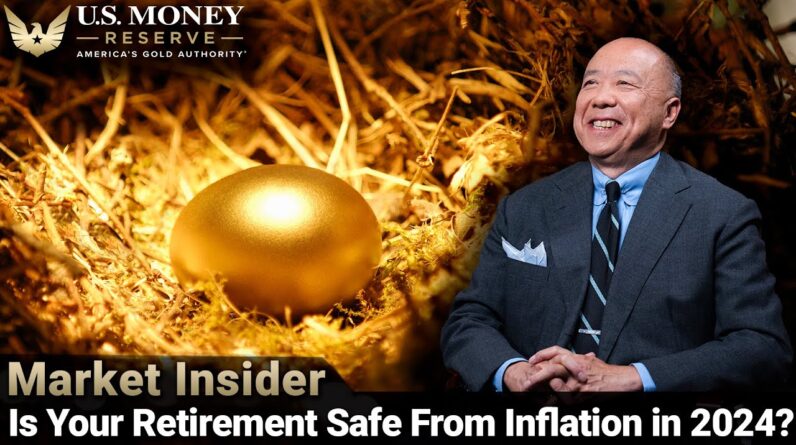Are you aware of the potential time bomb ticking in the global economy, with a staggering $500 trillion threat looming? It’s a chilling reality that cannot be ignored. In this blog post, we will delve into the complexities and risks of the global economy, shedding light on the imminent danger that lies ahead. Get ready to uncover the hidden challenges and explore possible solutions that can help defuse this unprecedented crisis. So sit tight, because the fate of the global economy rests in your hands.
The Global Economy: The Looming Threat of a $500 Trillion Time Bomb
Introduction
In today’s interconnected world, the global economy is a complex web of interdependent systems. While economic growth and stability are often touted as signs of progress, there is a looming threat that could potentially unravel the entire financial system. This threat comes in the form of a $500 trillion time bomb tied to interest rate derivatives. This article will explore the gravity of this situation, the factors contributing to it, and the potential implications it could have on the global economy.
Sitting on a $500 Trillion Time Bomb Tied to Interest Rate Derivatives
Interest rate derivatives are financial contracts that derive their value from changes in interest rates. These derivatives are used by various market participants, including banks, hedge funds, and corporations, to hedge against interest rate fluctuations or speculate on interest rate movements. The notional value of interest rate derivatives globally is a staggering $500 trillion, which is more than six times the size of the world economy.
Big Banks, Hedge Funds, and Corporations Betting Against the Bond Market
One of the major concerns associated with the $500 trillion time bomb is that big banks, hedge funds, and corporations are betting against the bond market. As interest rates rise, the value of bonds declines, and those holding these derivatives could potentially face massive losses. With the current low-interest rate environment, market participants have become increasingly complacent, assuming that interest rates will remain low indefinitely. However, this confidence may prove to be misplaced.
The Majority of Derivatives denominated in US Dollars
Another critical aspect to consider is that the majority of derivatives are denominated in US dollars. As the US Federal Reserve continues to raise interest rates, the value of the US dollar strengthens, impacting the global financial system. This creates a ripple effect throughout the global economy, particularly in emerging markets heavily reliant on dollar-denominated debt. The consequences of a devaluation in the dollar could be catastrophic, triggering a widespread financial crisis.
The Longer We Stay in a High-Interest Rate Environment, the Higher the Risk
The longer the global economy stays in a high-interest rate environment, the higher the risk of a financial crisis becomes. As interest rates rise, borrowing costs increase, which can lead to a slowdown in economic growth and a potential recession. Additionally, higher interest rates could lead to increased defaults on loans, putting additional strain on the financial system. It is crucial to closely monitor the trajectory of interest rates and the potential repercussions they may have on the global economy.
The Federal Reserve’s Rate Hikes Contribute to the Potential Global Financial Crisis
The rate hikes implemented by the US Federal Reserve have significant implications for the global economy. While their objective is to control inflation and ensure economic stability, these rate hikes may inadvertently contribute to a potential global financial crisis. As the Federal Reserve raises rates, borrowing costs rise not only in the US but also in other countries. This can create a chain reaction, as higher borrowing costs lead to less investment, reduced consumer spending, and ultimately, economic downturns.
The 2008 Crisis was Caused by Derivatives Tied to the Mortgage Market
To understand the potential ramifications of the $500 trillion time bomb, we need only look back to the 2008 financial crisis. One of the primary catalysts of that crisis was the use of derivatives tied to the mortgage market. These complex financial instruments amplified the impact of the housing market collapse, causing a ripple effect throughout the global financial system. This serves as a stark reminder of the destructive power that derivatives can have when misused.
The UK Experienced a Bond Market Collapse Due to Rising Interest Rates
The United Kingdom provides another cautionary tale, as it experienced a bond market collapse due to rising interest rates. In 1994, interest rates in the UK increased drastically, causing bond prices to plummet and sending shockwaves through the financial markets. This example highlights the vulnerability of bond markets to interest rate fluctuations and showcases how such events can have far-reaching consequences.
The Origin of the Current Time Bomb Could Start in the US Bond Market
The origin of the current time bomb tied to interest rate derivatives could potentially start in the US bond market. As the US Federal Reserve continues to raise interest rates and reduce its balance sheet, the impact on bond prices could be severe. This, coupled with the massive notional value of interest rate derivatives, creates a perfect storm for potential financial turmoil.
Conclusion
The global economy is currently sitting on a $500 trillion time bomb tied to interest rate derivatives. The risks associated with this time bomb are significant, and the consequences could be far-reaching. If big banks, hedge funds, and corporations continue to bet against the bond market and interest rates rise further, we could find ourselves facing a global financial crisis. It is crucial for policymakers, market participants, and individuals to be vigilant and take the necessary precautions to mitigate these risks.
FAQs
-
What are interest rate derivatives?
Interest rate derivatives are financial contracts that derive their value from changes in interest rates. These derivatives are used to hedge against interest rate fluctuations or speculate on interest rate movements. -
Why are big banks, hedge funds, and corporations betting against the bond market?
As interest rates rise, the value of bonds declines. Market participants may be betting against the bond market to profit from potential losses caused by rising interest rates. -
What is the notional value of interest rate derivatives globally?
The notional value of interest rate derivatives globally is a staggering $500 trillion. -
Why are the majority of derivatives denominated in US dollars?
The US dollar is the world’s reserve currency, and many international transactions, including derivatives trading, are denominated in US dollars. -
How can the Federal Reserve’s rate hikes contribute to a potential global financial crisis?
As the US Federal Reserve raises interest rates, borrowing costs increase globally, potentially leading to economic slowdowns, increased defaults on loans, and overall financial instability.










